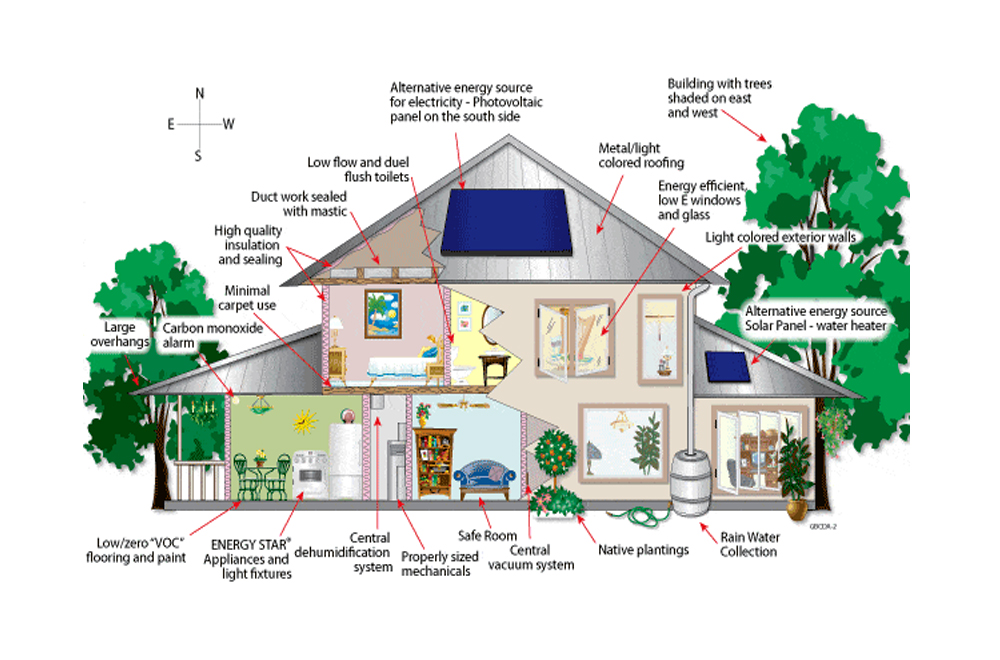Estimation and Costing in Civil Engineering play pivotal roles in successful project management. These essential components empower construction professionals with the tools needed for budgeting, resource allocation, and precise decision-making throughout the project lifecycle.
Estimation involves foreseeing and analyzing the costs and resources required for various project activities. It acts as a roadmap for effective planning and strategic allocation of resources. On the other hand, costing focuses on determining the actual expenses incurred during project execution, ensuring financial accountability.
This article will look into the intricate methods of estimation and costing in civil engineering projects. From traditional approaches to modern techniques, we explore the nuances that contribute to accurate budgeting, timely project completion, and overall project success. Gain insights into the dynamic interplay between estimates and actual costs, providing you with a robust foundation for steering your civil engineering projects toward success.
Table of Contents
ToggleWhat is Estimation and Costing in Civil Engineering?
Estimation and costing in civil engineering are integral processes that underpin the success of construction projects.
Estimation is the foundational step in which quantities are calculated or evaluated without specific measurements. This critical process occurs prior to project commencement and during preliminary planning, providing a roadmap for resource allocation. Despite being inherently accurate, estimates can vary depending on things like labor costs, necessitating a thorough understanding of man-hours for accurate projections. Drawing on observations and past experiences, the accuracy of estimates relies on available detail and the duration of data analysis.
Costing involves projecting the cost of a project before its completion, accomplished through itemized lists or construction cost calculators. The three-step process of estimating, bidding, and finalizing aids in predicting the financial requirements for project construction. The term “costing” typically refers to the expense associated with producing a single unit, such as construction work.
Two primary types of costings exist:
- Independent Costing: This type focuses on direct material and labor costs related to a specific phase, which may not accurately represent the overall project cost.
- Cumulative Costing: While examining total costs across all project phases, this method provides a comprehensive view. However, ensuring accuracy in estimates across phases can pose challenges.
Purpose of Estimating and Costing
Understanding the purpose of estimation and costing in civil engineering is crucial for effective project management and resource optimization.
They serve the following key purposes:
- Project Cost and Resource Determination: Estimation is focused on determining the overall project cost while costing zeroes in on the cost of individual work items. This differentiation is essential for comprehensive financial planning and understanding the granular details of project expenses.
Estimation and costing act as indispensable tools to ascertain the projected cost of a project and allocate resources like labor, materials, and equipment efficiently. This proactive approach helps in the strategic planning of projects, ensuring that financial and material resources are appropriately utilized. - Client and Contractor Transparency: Estimating and costing provide transparency to both clients and contractors regarding the financial commitments involved in a project. This clarity helps in setting expectations and avoiding surprises related to out-of-pocket expenses.
- Preventing Cost Overruns: Estimating allows for meticulous planning, helping to avoid cost overruns and set realistic deadlines. By understanding the budget constraints based on construction costs, equipment, and human resources, project managers can make informed decisions to keep projects on track.
- Comprehensive Costing in Project Management: Costing is a vital aspect of project management that goes beyond direct expenses. It encompasses capitalization, operations, maintenance, insurance, taxes, and depreciation, offering a holistic view of the necessary funds required for project completion.
- Project Planning and Budgeting: Estimation and costing are fundamental to the planning process, enabling the creation of accurate project timelines and budgets. These tools provide a structured framework for decision-making, helping project managers make informed choices about resource allocation and project milestones.
- Risk Management: The process of estimating and costing is inherently linked to risk assessment. By anticipating and analyzing costs, project managers can identify potential risks early on and implement mitigation strategies. This proactive risk management approach contributes to the overall resilience of the project.
- Streamlined Buying and Tendering Processes: Estimation and costing streamline procurement processes by providing a clear understanding of project costs. This clarity facilitates the buying and tendering processes, making them more efficient and transparent.
- Progress Tracking and Cost Control: Estimation and pricing mechanisms offer a means to monitor project progress meticulously. By tracking costs against the estimates, project managers can implement timely adjustments, ensuring that the project stays on course and within budget constraints.
Importance of Estimation and Costing
Project Precision and Scope
Estimating and costing form the cornerstone for construction and engineering companies. The ability to gauge the approximate size and scope of a project is critical. This knowledge allows organizations to plan meticulously, foresee potential challenges, and ensure the successful execution of projects.
Complexity of Civil Engineering Estimation
The estimation and costing process in civil engineering is intricate, demanding a deep understanding of project magnitude, material specifications, labor rates, and equipment requirements. These factors collectively contribute to a comprehensive estimation process, laying the groundwork for accurate budgeting and resource allocation.
Strategic Planning and Prediction
Estimation isn’t merely about calculating costs; it’s a strategic planning tool. By predicting the financial implications of construction, companies can make informed decisions about resource allocation, project timelines, and overall project viability. This foresight is indispensable for steering projects toward success.
Resource Optimization
Knowing the materials, labor, and equipment required allows for efficient resource optimization. Companies can plan their procurement processes, negotiate better deals, and ensure that resources are allocated judiciously, contributing to cost-effective project execution.
Proactive Risk Management
Estimating and costing go beyond numbers; they are instrumental in proactive risk management. Anticipating potential challenges, such as material shortages or labor issues, enables organizations to implement mitigation strategies, minimizing the impact of uncertainties on project timelines and budgets.
Types of Estimation in Civil Engineering
Estimating systems in civil engineering play a crucial role in project planning and cost management. Understanding the various types of estimates is essential for accurate budgeting and successful project execution. Here are the key types of estimates commonly used in the industry:
Time-Based Estimation
This method assigns a time duration to each task based on historical data from similar projects. It’s helpful for predicting project timelines and scheduling tasks efficiently.
Activity-Based Estimation
It assigns an hourly rate for each task, utilizing historical or industry averages to estimate task completion time. It’s ideal for projects where hourly labor costs are a significant factor.
Quantity Takeoff
This method involves measuring and counting materials based on project plans and specifications. It enables a precise calculation of materials needed, such as concrete, steel, and bricks.
Unit Cost Estimation
By assigning a cost per unit to project components or activities, this method relies on historical cost data or industry standards. The overall cost is calculated based on the number of units required, offering a practical approach to cost assessment.
Parametric Estimation
Parametric estimation establishes relationships between project parameters (e.g., area, volume) and costs by utilizing mathematical models and statistical analysis. These relationships are then applied to estimate costs for similar projects, enhancing precision.
Schematic Estimating
This process, commonly used in the real estate sector, involves estimating property values based on schematic designs and plans.
Lump-Sum System
A common approach, particularly for straightforward projects, is where the contractor breaks down the job into parts and provides individual costs. The winner of the bid must estimate the time for each part and add it up to the overall project cost.
Cost Indexing
This method adjusts historical cost data for inflation or market changes. Cost indices or factors are applied to past costs, providing a more accurate estimation of project costs considering current market conditions.
Expert Judgment
It relies on the knowledge and experience of construction industry professionals. Expert judgment involves consulting experienced estimators or experts for insights based on their expertise and familiarity with similar projects.
3D Modeling and BIM
Building Information Modeling (BIM) and 3D modeling software contribute to precise quantity takeoffs and cost calculations. Virtual models accurately represent the project, enhancing the accuracy of estimates.
Material Estimating System
Integral to project evaluation, this system provides a list of quantities and costs for all materials needed, including rented items. It synergizes with scheduling and profitability analysis to assess project feasibility and profitability.
Components of an Estimate in Civil Engineering
Constructing accurate cost estimates in civil engineering involves careful consideration of various elements. Let’s look into some essential components and data sources that are essential for comprehensive planning and cost evaluation.
Project Drawings
Detailed architectural and structural drawings provide a comprehensive understanding of the project’s scope, dimensions, and specifications. It includes floor plans, elevations, sections, and other relevant drawings.
Bill of Quantities (BOQ)
A detailed list outlining all required materials, quantities, and specifications for construction. It breaks down each item, such as bricks, cement, steel, doors, and windows, along with their respective quantities and specifications.
Specification
It outlines quality standards and requirements for materials, equipment, and workmanship. It provides information on material types, finishes, construction methods, and installation guidelines.
Market Rates
Current market rates for materials, labor, and equipment are crucial for accurate cost estimation, considering factors like location, availability, season, and economic conditions.
Labor Productivity Rates
Finding the number of labor hours needed for specific construction activities helps estimate time requirements, considering workforce skill levels, experience, and efficiency.
Equipment Rates
From excavators to cranes, determining the rates for equipment usage is fundamental. This includes factoring in rental costs, fuel consumption, maintenance expenses, and charges related to skilled operators. Whether you’re dealing with earthmoving tasks or intricate construction processes, accurate equipment rates are necessary for a precise cost estimate.
Overhead and Profit Margin
Overhead encompasses administrative expenses, insurance, utilities, and taxes. Integrating a profit margin ensures that the estimate covers not just the project’s direct costs but also contributes to the contractor’s profit and risk mitigation. It’s a delicate balance between comprehensive cost coverage and the financial health of the construction endeavor.
Local Regulations and Permits
Every construction project operates within a regulatory framework. Understanding and complying with local regulations and obtaining necessary permits are crucial steps in the estimation process. Whether it’s acquiring building permits, environmental clearances, or specialized certifications, these factors introduce additional costs. An accurate estimate considers these compliance-related expenses, ensuring smooth and lawful project execution.
Historical Data
Experience is a valuable asset. Historical data from similar projects provides insights into cost trends, productivity rates, and potential risks. By benchmarking against past experiences, estimators can make informed decisions, anticipate challenges, and refine their estimates.
How do Civil Engineers determine Cost Estimates?
Determining cost estimates in civil engineering is a meticulous process that involves multiple considerations. It involves expertise, market analysis, and a keen understanding of project intricacies. Civil engineers navigate the complexities of cost estimation for successful project outcomes.
Construction estimates are primarily based on quotes provided by contractors, subcontractors, and suppliers. The construction manager conducts a thorough site survey, estimating the project’s size and complexity while considering local labor rates and typical material costs.
The size and complexity of the project play a crucial role in influencing project estimates. Larger projects, requiring more time and resources, often result in higher estimates compared to smaller, less intricate ones. An accurate estimate takes into account all costs associated with materials, equipment, and personnel. For instance, building a small house may incur additional costs for windows, doors, and stairs, while a medium-sized office building may have larger costs for structural components.
Experienced professionals who make use of their knowledge, experience, and tools develop estimates in civil engineering. These experts assess current market conditions to establish a range of values based on construction costs, ensuring the calculation of accurate and realistic estimates. The primary basis for estimates lies in the time and materials needed to complete tasks. Estimators also consider factors like access to the site and investigate potential hidden conditions that could impact the work.
Estimators play a crucial role in assessing market conditions comprehensively, allowing them to calculate estimates that align with prevailing economic factors. Additionally, they may identify additional costs not usually associated with the project, such as those for hazardous material removal. This ensures a thorough and inclusive estimate that accounts for all potential expenses.
The determination of cost estimates in civil engineering is a multifaceted process. This guide aims to unravel the layers of this intricate process, offering insights into how civil engineers navigate the complexities of cost estimation for successful project outcomes.






